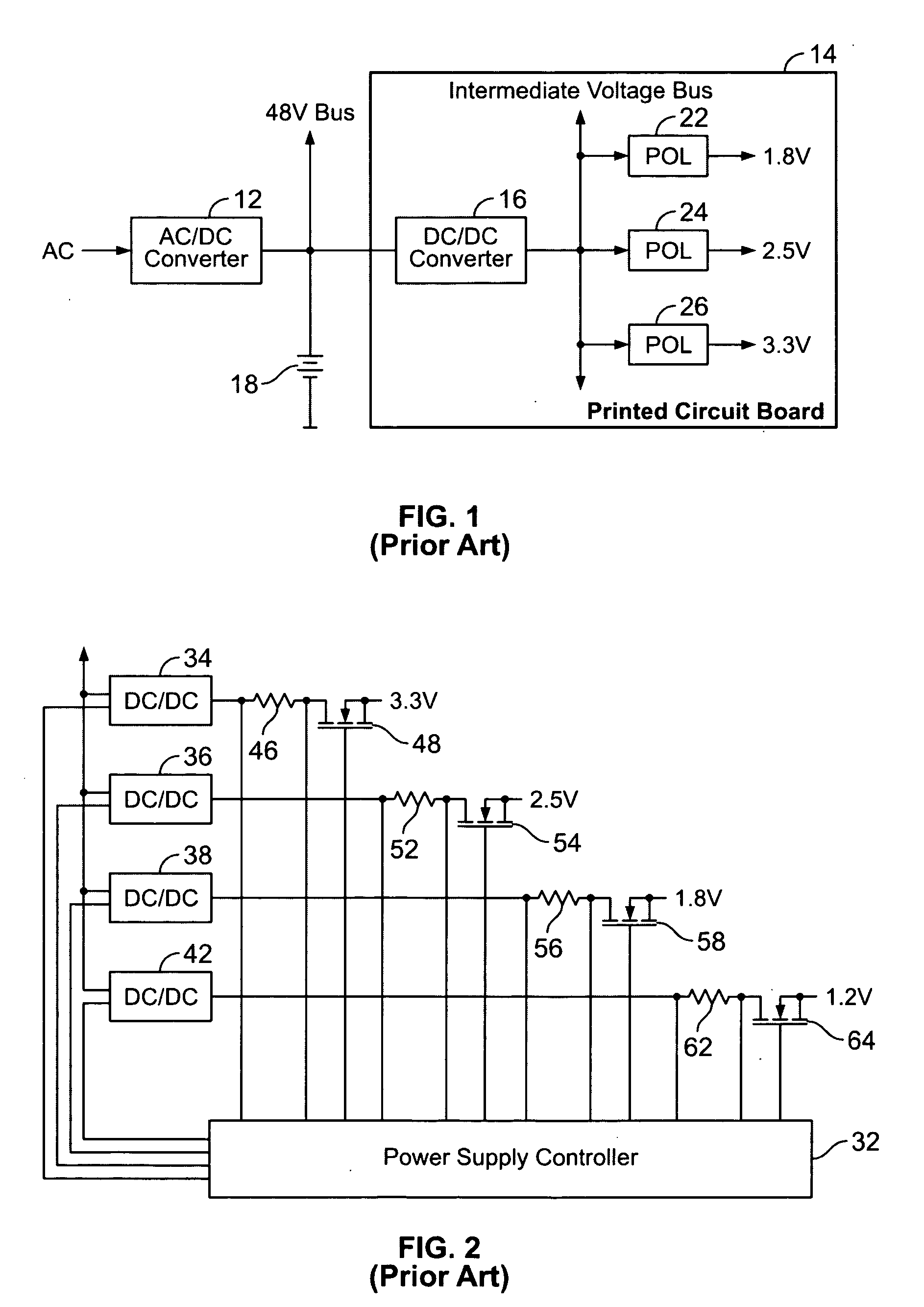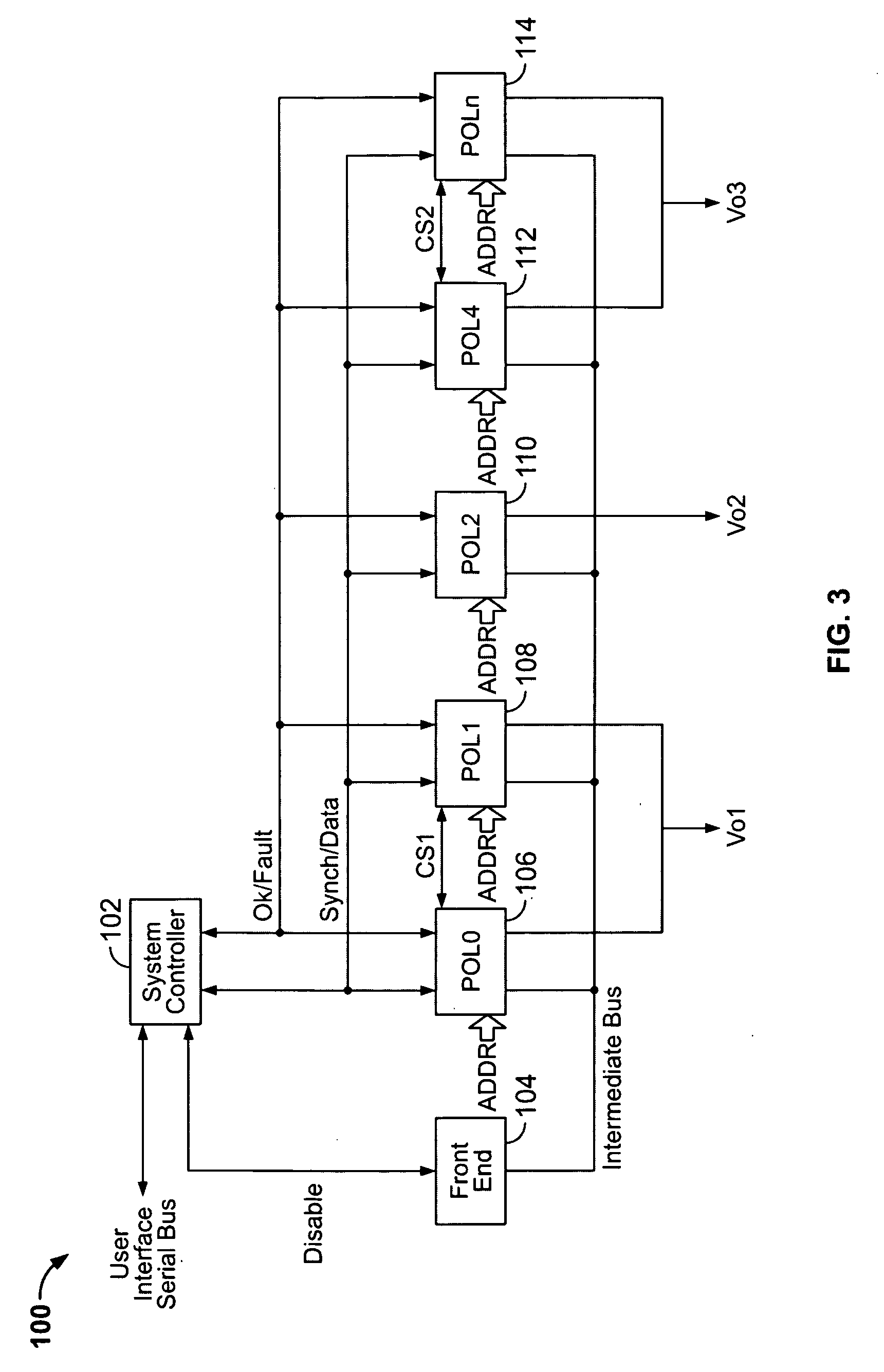Method and system for controlling an array of point-of-load regulators and auxiliary devices
a point-of-load regulator and array technology, applied in the direction of liquid/fluent solid measurement, instruments, sustainable buildings, etc., can solve the problems of large circuit board area, inability to deliver relatively high current at low voltage over a relatively long distance, and congestion of signal line routing
- Summary
- Abstract
- Description
- Claims
- Application Information
AI Technical Summary
Benefits of technology
Problems solved by technology
Method used
Image
Examples
Embodiment Construction
[0021] The present invention provides a system and method for controlling and monitoring POL regulators and auxiliary devices within a distributed power system. In the detailed description that follows, like element numerals are used to describe like elements illustrated in one or more figures.
[0022] Referring first to FIG. 1, a prior art distributed power delivery system is shown. The prior art distributed power deliver system includes an AC / DC converter 12 that converts the available AC power into a primary DC power source, e.g., 48 volts. The primary DC power source is connected to a primary power bus that distributes DC power to plural electronic systems, such as printed circuit board 14. The bus may be further coupled to a battery 18 providing a back-up power source for the electronic systems connected to the primary power bus. When the AC / DC converter 12 is delivering DC power into the primary power bus, the battery 18 is maintained in a fully charged state. In the event of l...
PUM
 Login to View More
Login to View More Abstract
Description
Claims
Application Information
 Login to View More
Login to View More - R&D
- Intellectual Property
- Life Sciences
- Materials
- Tech Scout
- Unparalleled Data Quality
- Higher Quality Content
- 60% Fewer Hallucinations
Browse by: Latest US Patents, China's latest patents, Technical Efficacy Thesaurus, Application Domain, Technology Topic, Popular Technical Reports.
© 2025 PatSnap. All rights reserved.Legal|Privacy policy|Modern Slavery Act Transparency Statement|Sitemap|About US| Contact US: help@patsnap.com



